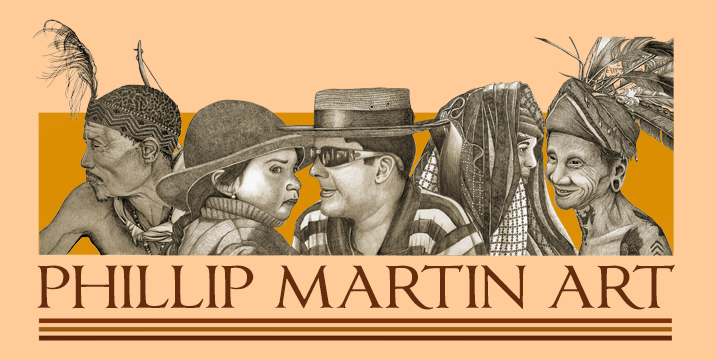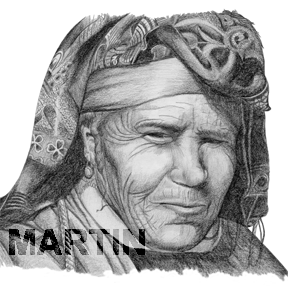

If you know one city in Morocco, it is probably Casablanca. I watched that movie with a friend from the city. He was horrified that that was what the rest of the world thought of his city. Casablanca was nothing like the movie. It was a big, crowded city where many, many Moroccans came to find a better life for themselves. There was no Rick's Café except for a cheap kind of copy at one of the big hotels.
I taught at an international school in Casablanca for two years. On my second week in the city, I needed a little help at a shoe repair shop to fix my briefcase. Someone from my school made a map for me. I "followed" as best as I could, but I became completely lost. Fortunately, I wandered up to a shoe repair shop that was not much larger than a bathroom.
That's when I kind of panicked. I couldn't speak a word of Arabic. I could barely speak any French. How in the world was I supposed to tell the shoe repairman what I needed? I stood there speechless.
Mohamed looked up at me and said, "I speak English. What do you need?"
He fixed my briefcase for free. Then, he closed up the shop so he could give me a walking tour of the city. That brought me to the oldest part of the city, the medina, with its narrow winding streets and crowd of Arabic speakers. Mohamed directed me up a dark hallway to the apartment he shared with his parents, two brothers and two sisters.
For a brief moment, I thought about not going up those stairs. Anything could have happened. What did happen was never expected. I met the Chakirs. They became my family from day one. Only Mohamed and his brother Abdelhadi spoke English. All the others spoke Arabic or French. It didn't matter. They were my family. Whenever there was a Moroccan celebration, I was not invited to their home. I was expected. I had a Moroccan experience like nobody else I ever met.
Woman from the Atlas Mountains

Exploring the Atlas Mountains was always an adventure. Many of the Berbers living there were shepherds. Their homes, huts and fences were made of rock and dirt that blended into the landscape. Scattered sheep and goats dotted the mountain tops. But, one thing always stood out on the mountainside. Berber women! The entire landscape blended into earth tones of brown or grey, but the Berber women loved color and often wore bright red and yellow. Those colors could be seen from great distances. Alas! Unfortunately for me, Berber women never liked their photos taken.
As I hiked along the road, a farmer invited me to visit his home. I climbed up the side of the mountain and was warmly greeted with the traditional kiss on both cheeks. Then, he and his wife ushered me through the front door of their adobe home. It opened to an interior courtyard. To the left were two rooms that looked like they could have been bedrooms. There were two other rooms to the right. I was directed into them. One had a calf and the other had the momma cow. And, yes, they both smelled like it.
Naturally, I was served mint tea. Everyone in Morocco did that. It didn't matter where I found myself. Someone always had tea ready to serve. But, in this home, I was also served milk. I was told you could get tuberculosis from drinking unpasteurized milk. I wasn't sure if it was true, but I only had a small sip. The milk was sour and chunky. There was no way I could be that polite in spite of being raised to eat — or drink — whatever was set before me. I put the chunky milk down by the tea glasses and hoped they wouldn't notice. Of course, they did. Nobody seemed offended and the guy drank it down.
Under normal circumstances, this Berber home visit would have been the highlight of my day. However, on the drive out of the mountains, about a dozen Berber women dressed in those bright colors, came up over the hill side — almost out of nowhere — and onto the road.
It was a stop the car moment, of course! Allah must have looked down on me graciously that day, because when I asked this woman if I could take her photograph, she said yes.
It has always been one of my most favorite portraits.
Continue on to Morocco Image 1, 2, 3, 4, 5 and 6 or back to the Portraits Home Page.